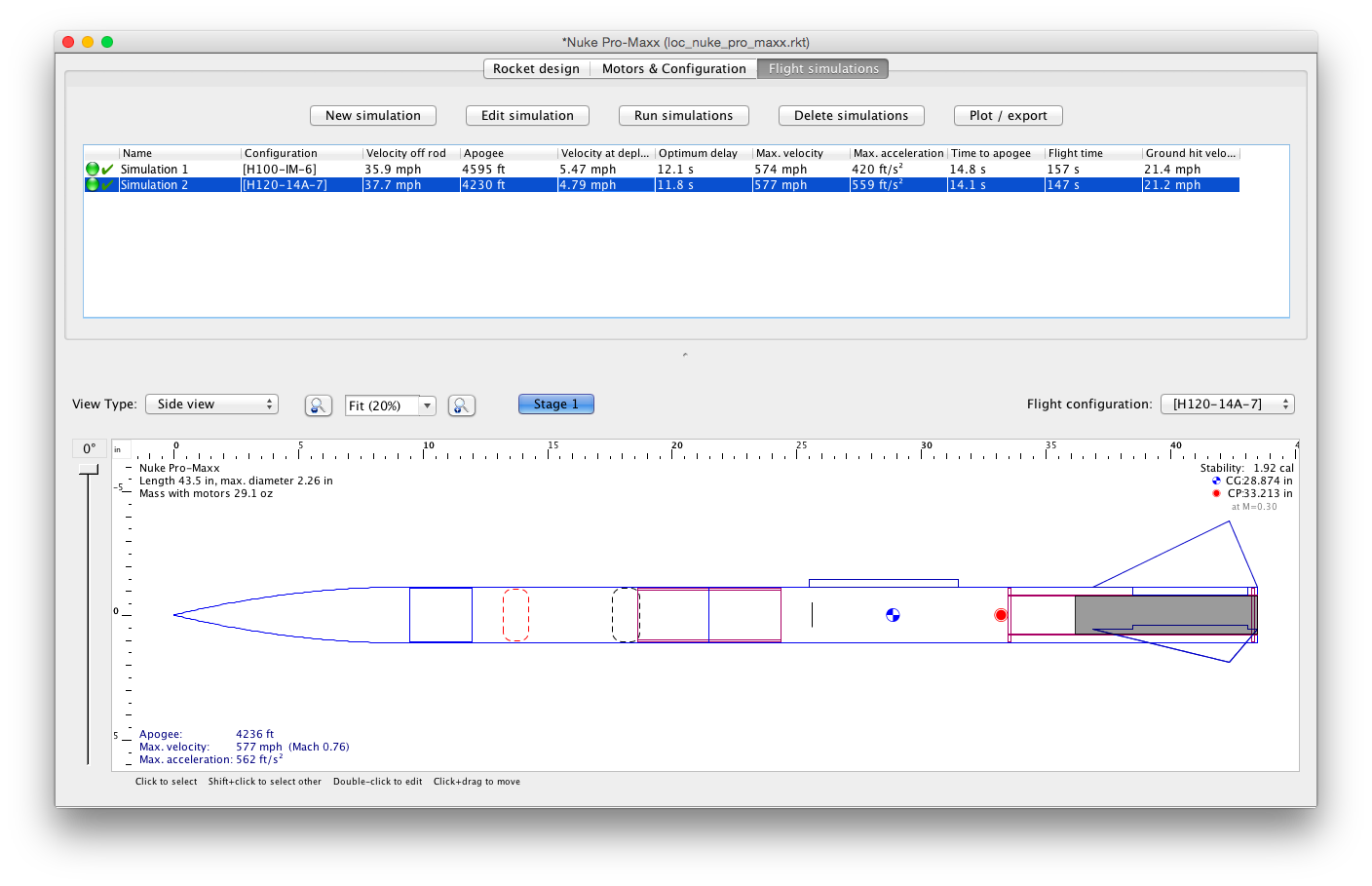watermelonman
Well-Known Member
- Joined
- Sep 22, 2014
- Messages
- 2,597
- Reaction score
- 10
I am never surprised when my simulations do not perfectly match real flights.
However, usually they do a good job of telling me which motor is going to perform how in a given rocket. Specifically, if I simulate motor A to 3500 feet and motor B to 3000 feet at similar speeds, even if they are both off by 500 feet I would expect motor A to go higher in reality, and the percentage error to be the same.
Last launch I had motor B go higher, by a few hundred feet! I thought it might be to higher initial thrust and underestimating total rocket weight in the sim, but I added half a pound and the apogees slid by a similar amount.
Are my simulation expectations reasonable or am I simply asking for too much accuracy? Would Rocksim likely be more accurate?
However, usually they do a good job of telling me which motor is going to perform how in a given rocket. Specifically, if I simulate motor A to 3500 feet and motor B to 3000 feet at similar speeds, even if they are both off by 500 feet I would expect motor A to go higher in reality, and the percentage error to be the same.
Last launch I had motor B go higher, by a few hundred feet! I thought it might be to higher initial thrust and underestimating total rocket weight in the sim, but I added half a pound and the apogees slid by a similar amount.
Are my simulation expectations reasonable or am I simply asking for too much accuracy? Would Rocksim likely be more accurate?



